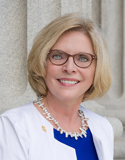
By Lindsay Street, Statehouse correspondent | As many as two in 100 South Carolina public school students have not checked in with their teachers since mid-March, according to preliminary data collected by the S.C. Department of Education and shared with legislators.
“There is a sincere level of concern,” York Republican Rep. Raye Felder said.
Children, especially those in low-income households, could lose out on learning and, with fewer abuse and neglect cases reported since schools shuttered March 15, they could be in bad situations, completely unknown, Felder said.
S.C. Education Oversight Committee Chair Ellen Weaver said this week the number of unaccounted-for children keeps her up at night.
‘A Stephen King novel’

Lexington Republican Sen. Katrina Shealy said more people need to be worried.
“If two kids go missing it’s a ‘Dateline’ story. If 15,225 kids go missing, it’s either a Stephen King novel or the Rapture happened and we got left behind, and somebody has to be worried,” Shealy said, adding that the more likely outcome will be thousands of children left behind academically.
The fears aren’t unfounded. The Charleston County School District initially found 79 students had not contacted their teachers for weeks. Through a concerted, multi-agency effort, 56 were located by May.
“The children we all know who are most vulnerable and need public schools were more likely not to be engaged,” Charleston County schools Superintendent Gerrita Postlewait said in an interview with Statehouse Report. “Many of them were in very traumatic kinds of family circumstances.”
She said those circumstances included neglect, homelessness and becoming the caretaker for an infirmed guardian. Some situations were less alarming, such as high schoolers who took jobs to help their families. The district is still unable to find 23 students, far fewer than the preliminary state average of 167 per school district.

This week, the House and Senate convened briefly to approve $222.7 million in federal money for the S.C. Department of Education and school districts to fund in-person education programs prior to the start of school to help catch up kids who have fallen behind during remote learning, which began March 15 as the state sought to slow the spread of the coronavirus.
“Even if you try to do summer reading camps, math and language arts prior to the start of the academic school year, if we don’t have a way to reach these families, then how do they know?” Felder asked.
Incomplete data shows thousands absent
The legislature tasked the Department of Education to provide the data, and the agency neared completion this week, department spokesman Ryan Brown said. He said it is “the first hard data” on children unheard from in the pandemic and it will be completed after June 29.
The incomplete data of most of the schools has been shared with some education stakeholders, including Felder and Shealy. Felder is a member of the House Education and Public Works Committee, and Shealy is an advocate for endangered children. An early estimate from 800 of the 1,221 public schools suggested as many as 13,500 children were unaccounted for.
According to Shealy, who said she spoke directly with Superintendent Molly Spearman and shared a text message from Spearman containing the information, the number of absentee children is now believed to be closer to 15,225 from 1,200 schools.
“The numbers continue to go down as more students are contacted,” a text to Shealy said.
“I cannot confirm those numbers,” Brown said Thursday in an email to Statehouse Report. In a later email, he said that the earlier estimate of 13,500 students, provided by both Shealy and Felder, “would be your best bet” at accurately portraying the data.
Depending on which estimate is used, some 1.7 percent to 1.9 percent of public school students have not had contact with their teacher since March 15.
The percentage of unaccounted-for children is down sharply from the Department of Education’s original estimate of 4 percent to 5 percent of students, according to Spearman’s comments following an April 1 teacher survey.
Checking in
Some educators said they did not receive state guidance on what happens when they can’t communicate with a student.
“Districts didn’t have a protocol or steps in place to say, ‘OK, if this much time passes and no one has heard from them … then who else do we involve?’” said Dottie Adams, a board member for grassroots teacher organization SC for Ed and Richland County teacher. She said there was uncertainty over whether the school needed to conduct a home visit, involve social workers or the school resource officer, or call the Department of Social Services (DSS).
![]() At the start of the school closure, districts were directed by the Department of Education to mark students as present to avoid triggering repercussions of truancy, according to Postlewait. And Charleston County School District didn’t begin trying to track every child until weeks into remote learning, she said.
At the start of the school closure, districts were directed by the Department of Education to mark students as present to avoid triggering repercussions of truancy, according to Postlewait. And Charleston County School District didn’t begin trying to track every child until weeks into remote learning, she said.
“The guidance from the state was that we would count all students present but clearly each district was responsible for making sure every student was accounted for,” Postlewait said. “Our goal was that every student we see receive a personal phone call or face-to-face (virtually) twice a week just to make sure everything was OK and they were still engaged.”
To do that, the district rolled out a principal-led effort to track engagement in students, which led the district toward discovering 79 students who hadn’t contacted a school employee since schools closed, Postlewait said. She said the unaccounted-for children were mostly from schools that serve a high-poverty population.
Teachers, principals and social workers called all phone numbers listed and knocked on doors to find children they hadn’t heard from, Postlewait said. Later efforts included help from state agencies and law enforcement, she said.
“We are deeply concerned about them and we have done everything our resources let us do,” Postlewait said.
Looking forward
Shealy said she wants more federal money to be directed toward DSS finding the 13,500 to 15,225 students.
“Then, the Department of Education needs to use whatever money they’re getting to help catch these children up,” she said.
The ReOpenSC Senate Select Committee’s June 11 report to the Senate President included a recommendation that the Department of Education seek the assistance of DSS to help locate students.
“DSS is ready and willing to assist at the Department of Education’s direction,” DSS Public Information and Media Relations Director Marilyn Matheus emailed Statehouse Report.
Felder said she wants to see the Department of Education and individual school districts “to come up with creative ways to locate these children.”
“Maybe we need to put together a joint force between our state Education Department and DSS … but we have to have some contact with these families,” she said.
- Have a comment? Send to: feedback@statehousereport.com
















 We Can Do Better, South Carolina!
We Can Do Better, South Carolina!
This is the perfect example of lack of documented inner agency attempts for networking and accountability. SC has no Statewide Technology System to document agency involvement or service delivery. The Annie Casey Foundation Kids Count report released last week is a perfect example of tragic stats related to the “well being” of children in our state. Shame on SC for rating 41st worst of the 50 states. All school districts in SC can document attendance, grades, service delivery and other resources provided in POWER SCHOOL. Why allow children to go missing for so long? I would assume by now that many children and families are homeless are doubled up with relatives or have left the state. The McKinney Vento Homeless Act also provides support for families. Again, NETWORKING to document and implement accountable service delivery is not a priority of the SC General Assembly. Best Practices require an all out effort to share a documented case management approach for children and families. Tragic results for our children are perpetuated year after year.
Are the school districts so Micro managed that they did nothing about connecting with the missing kids and their families until the State Dept of Education told them to? Shame. How about some gumption people.
How about PARENTS, and NOT the State, having responsibility for their own children WITHOUT government interference.
“Checking In” – really?
Get out of our children’s lives.
They have PARENTS.
I feel certain that teachers have been attempting to contact students for quite some time. My daughter teaches an underserved population. She has spent most of her time calling every available number multiple times each week to touch base with students. Few of her students have internet access or devices to learn online. She has referred each unreached student to administration if the numbers were no longer working. Teachers and administrators have shown tremendous “gumption” during this unforeseen pandemic as they have traveled uncharted waters. Another daughter teaching in a more affluent district has taught a lesson online each morning and held “office hours” each afternoon to help each student with any questions or concerns about their daily packet. Most teachers have gone above and beyond trying to find ways to connect with and interact with their students. I would suggest combining resources rather than shifting blame to solve the problem.
Pingback: Statehouse Report – NEWS BRIEFS: Schools in state haven’t heard from 16,085 students